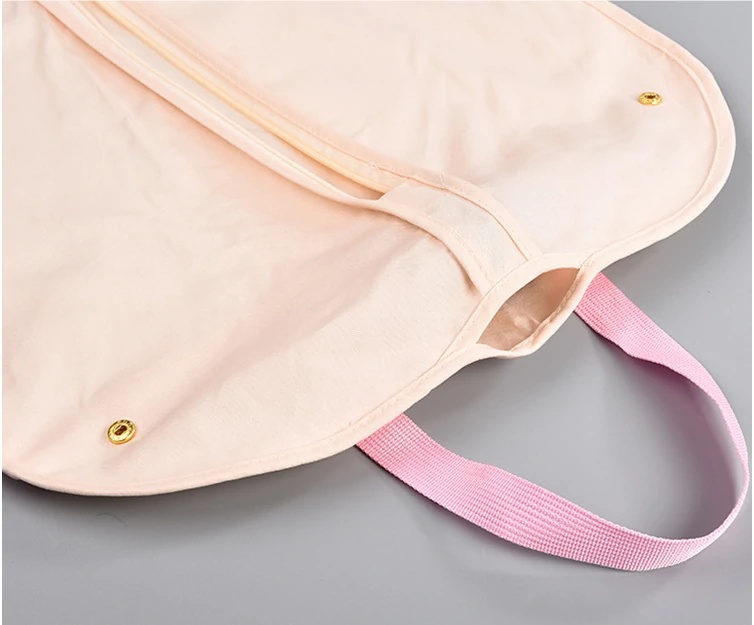Introduction
In a world increasingly focused on environmental consciousness, the demand for eco-friendly and sustainable products has seen a significant rise. This trend extends beyond adult products to include children’s items, with parents actively seeking alternatives that minimize environmental impact. In this article, we delve into the realm of children’s cotton garment bags, exploring the availability of eco-friendly and sustainable options.

Understanding Eco-friendly Cotton Garment Bags
When we talk about eco-friendly and sustainable children’s cotton garment bags, it’s crucial to define these terms in the context of the product. Eco-friendly, in this sense, refers to products that are produced with minimal environmental impact, considering factors such as raw material sourcing, manufacturing processes, and end-of-life disposal. Sustainable, on the other hand, implies a focus on long-term viability, ensuring that the production and use of the product do not deplete natural resources.
Cotton has long been a favored material for garment bags, providing a breathable and protective cover for children’s clothing. However, the key question is whether the cotton used in these bags is produced in an eco-friendly and sustainable manner. Cotton, despite its popularity, has faced scrutiny due to conventional farming practices that involve heavy pesticide and water usage.
Sustainable Practices in Manufacturing
To truly offer eco-friendly children’s cotton garment bags, manufacturers are increasingly adopting sustainable practices throughout the production process. This involves not only the sourcing of raw materials but also the manufacturing and packaging stages. Sustainable practices may include the use of organic cotton, reduced water consumption, and energy-efficient production methods.
Companies committed to sustainability often invest in environmentally conscious design and production techniques. This may include the use of renewable energy sources, waste reduction measures, and the implementation of closed-loop systems to minimize environmental impact. The goal is to create products that not only meet the functional requirements of consumers but also adhere to high environmental standards.
Eco-friendly Materials and Alternatives
In the pursuit of sustainability, many manufacturers are exploring alternatives to conventional cotton. Organic cotton, for instance, is gaining popularity as a more environmentally friendly option. Grown without the use of synthetic pesticides and fertilizers, organic cotton reduces the environmental footprint associated with conventional cotton farming.
Beyond organic cotton, there are other eco-friendly materials used in the production of children’s garment bags. Recycled polyester, for example, provides a sustainable alternative to virgin polyester, which is derived from non-renewable resources. Exploring and understanding the environmental impact of different materials is essential for consumers seeking truly eco-friendly options.
Certification and Standards
Navigating the eco-friendly landscape can be challenging for consumers. To address this, various certifications and standards have been established to verify the sustainability claims of products. When it comes to children’s cotton garment bags, certifications such as Global Organic Textile Standard (GOTS) and OEKO-TEX® STANDARD 100 provide assurance that the product meets specific environmental and social criteria.
Consumers play a vital role in promoting sustainability by choosing products that align with their values. Understanding these certifications and standards empowers consumers to make informed decisions, encouraging companies to prioritize transparency in their supply chains.
Case Studies
Examining specific brands or products known for their commitment to eco-friendly children’s cotton garment bags provides real-world examples of sustainable practices in action. Companies that have successfully implemented environmentally conscious initiatives serve as inspiration for the industry as a whole.
One such brand is “GreenKids Garments,” which has gained recognition for its use of organic cotton and commitment to fair labor practices. By analyzing the success stories of such companies, we can identify best practices and encourage others to follow suit.
Challenges and Future Trends
While the move towards eco-friendly children’s cotton garment bags is promising, challenges persist. One notable obstacle is the cost associated with sustainable practices. Organic and sustainable materials, coupled with eco-friendly production processes, often result in higher production costs. This poses a challenge for both manufacturers and consumers, as sustainable options may be priced at a premium.
Despite these challenges, the future holds promising trends in the realm of eco-friendly packaging for children’s products. Innovations in material science, increased consumer awareness, and evolving regulations are likely to drive positive change. As sustainable practices become more mainstream, the industry will adapt to meet the growing demand for eco-friendly children’s cotton garment bags.
Conclusion
In conclusion, the exploration of eco-friendly and sustainable options for children’s cotton garment bags is a journey toward responsible consumerism. As parents and guardians seek products that not only meet the practical needs of their children but also align with their environmental values, the industry is compelled to evolve.
Understanding the nuances of eco-friendly practices, sustainable manufacturing, and the materials used in garment bags empowers consumers to make informed choices. By supporting brands that prioritize environmental responsibility and seeking out certified products, consumers contribute to a collective effort towards a more sustainable future for children’s products.
As we navigate the challenges and embrace future trends, the hope is that eco-friendly and sustainable options for children’s cotton garment bags become the norm rather than the exception. Through conscious choices, consumers can inspire positive change in the industry, fostering a world where sustainable practices are integral to the production of every product, including those designed for the youngest members of our society.





